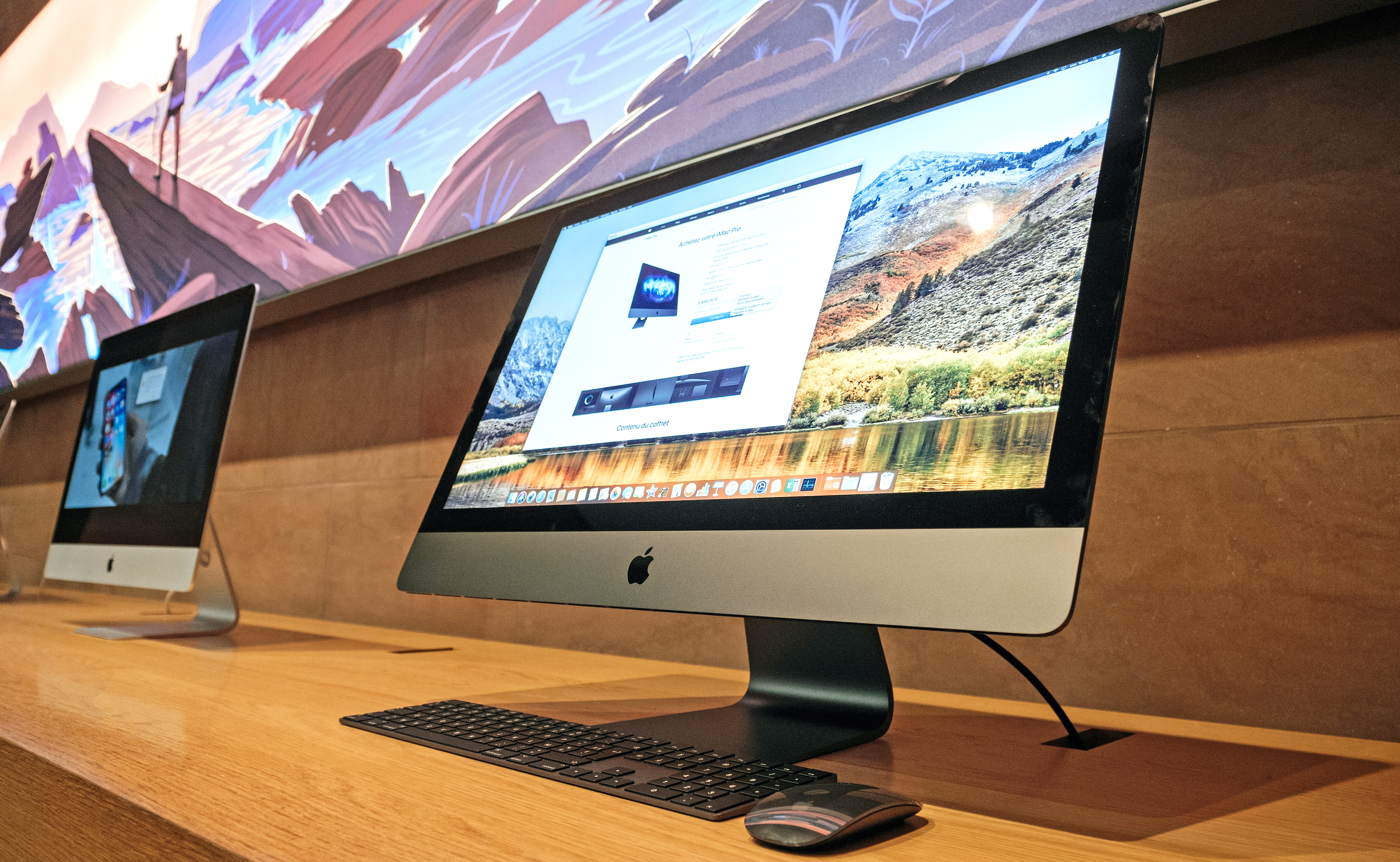Best curved monitors of 2025 — tested and rated
Find out the best curved monitors for gaming, work and everything in between
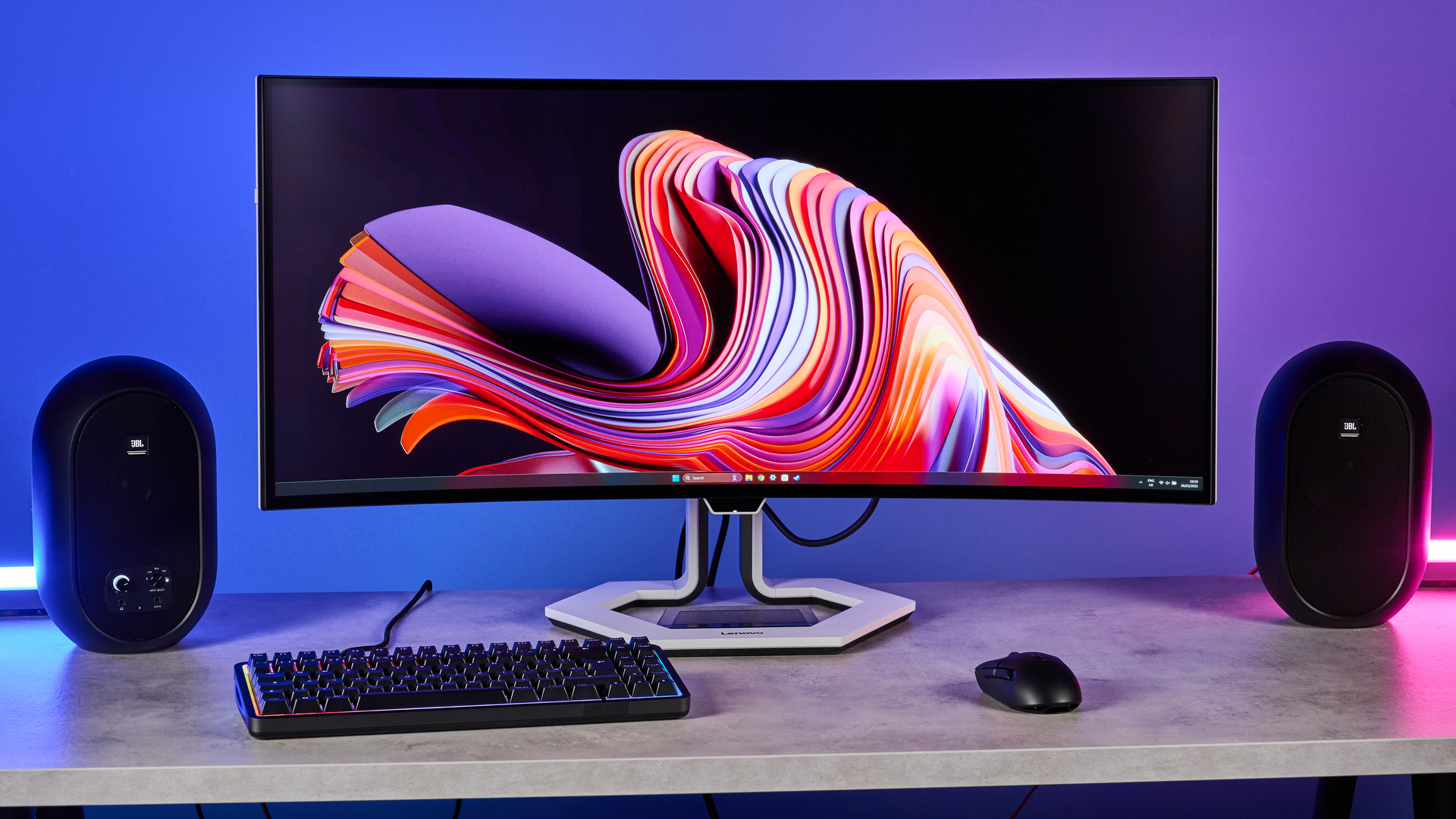
Once you've found yourself one of the best curved monitors, it's hard to ever go flat. From the deep immersion they give you for gaming to the wide screen space for productivity at work, and even the reduced eye strain due to the distance between your eyes and the screen, curved monitors will complete any PC setup upgrade.
I know because my team of display experts and I test dozens of monitors all year round, from analyzing their specs using professional-grade equipment to spending weeks working (and gaming) away on them. And, of course, we factor in their price.
With all that, we've gathered the best we've tested to put on your radar. Our current top pick is the LG UltraGear 45GR75DC, a 45-inch gaming monitor with plenty of size and gorgeous visuals for both work and play.
If that doesn't suit your fancy, we've got other monitors worth checking out. So, read on for the best curved monitors right now, along with advice on what to get.
What to look for in a curved monitor?
Screen size: A bigger monitor is generally going to make for a superior purchase simply because it means you're getting the most visual real estate for your investment. Larger screens make consuming full-screen media more enjoyable, while also ensuring split-screen multitasking is that much easier.
Curvature: It's in the name, after all. The amount of curvature, measure in an "R" value, will indicate the degree of the curve on a monitor. This can range from 800R, offering a more pronounced curve for more immersive visuals, to 1800R, for a more gentle touch for a wider view. Just remember, the smaller the "R" value, the more curve you'll get.
Resolution: Higher resolutions are also better, since they allow you to see more on-screen details and let you view more information in the same screen size. 1080p (1920 x 1080) is the absolute lowest resolution you want from a modern curved monitor, though, as many of the best models come in aspect ratios that aren't 16:9, the best ultrawide curved monitors usually sport a resolution of (3440 x 1440), while 32:9 super ultrawide displays can reach head-spinning pixel numbers of (5,120 x 1,440).
Refresh rate: An important number to look out for if you're a hardcore gamer. This measures how many times per second your monitor is able to draw a new image. It's measured in Hertz (HZ). Most monitors can achieve refresh rates of 60Hz or less, and that's plenty for watching videos or getting work done, though desktop navigation is going to feel a little sluggish. However, if you want to play games at higher than 60 frames per second, or you're planning on working with video at frame rates above 60 fps, you should buy a curved monitor with a higher refresh rate. 120Hz is good, 240Hz is better, and there are even monitors that offer refresh rates of over 300Hz.

I never thought I'd be a fan of curved monitors, especially having stuck with flat screens for years. However, after finally testing a fair share myself, I can see the joys of having that slight wrap-around immersion in everything I do. Mainly, these monitors are primed for gaming, with amazing image quality, vibrant colors and ultrawide aspect ratios to capture all the action.
The best curved monitors you can buy today
Why you can trust Tom's Guide
The best overall curved monitor

Specifications
Reasons to buy
Reasons to avoid
Not only is the LG UltraGear 45GR75DC the best curved gaming monitor you can grab right now, it's also an excellent option for work, and it's all thanks to its great size, gorgeous visuals and great value for the money.
LG's monitor makes for a great entry into the world of ultrawide monitors thanks to its $899 asking price. It features a blazing-fast 200Hz refresh rate and a low 1ms response time. These features make for a fast and smooth experience no matter what game you're playing. And no matter whether your gaming rig has an Nvidia card or AMD, the 45GR75C will also deliver a smooth and lag-free time with support for both G-Sync and FreeSync. Better yet, the 45-inch display is also ideal for multitaskers.
The only downside is that the LG UltraGear 45GR75C doesn't get as bright as advertised. This monitor is advertised to hit 600 nits of HDR brightness. However, it peaked at 391 nits. That's not terrible but short of what we expected. Other than that, the LG UltraGear 45GR75C is a curved monitor we highly recommend.
Read our full LG UltraGear 45GR75C review.
The best budget curved monitor

Specifications
Reasons to buy
Reasons to avoid
The Gigabyte G27FC is a 27-inch curved gaming monitor that aims to give you a more immersive experience when playing games without costing an arm and a leg.
With its 1080p resolution and 165Hz refresh rate, this monitor is built for playing PC games at high framerates, and after spending a few months with it, we're confident you'll appreciate the G27FC's gaming capabilities.
The limited brightness and workhorse design won't wow onlookers, but you'd be hard-pressed to get a much better 27-inch curved gaming monitor for this price.
Read our full Gigabyte G27FC review.
The best productivity curved monitor
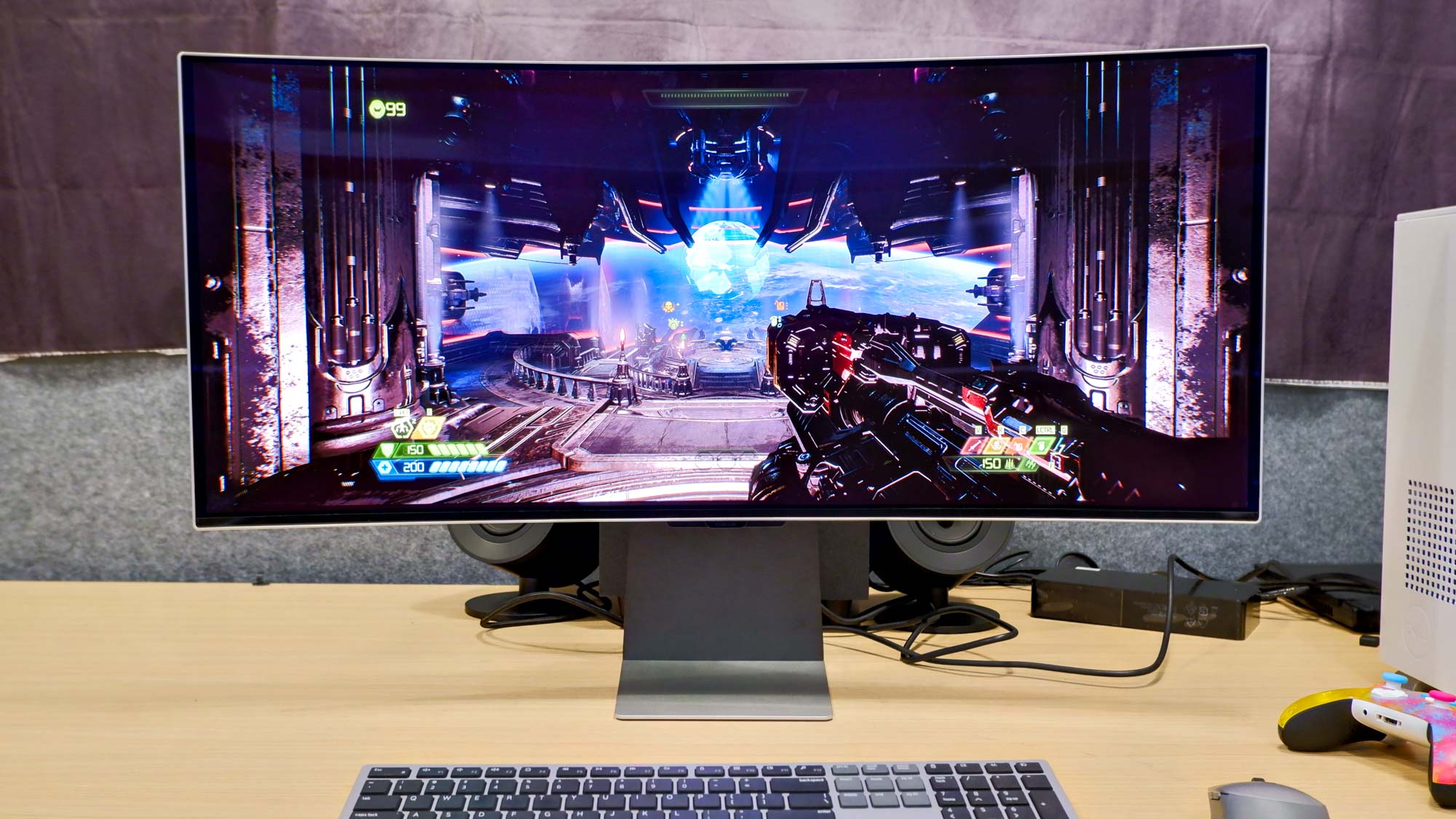
Specifications
Reasons to buy
Reasons to avoid
The Samsung Odyssey OLED G8 is a stylish OLED curved gaming monitor that’s a serious rival for the Alienware AW3423DWF. Like that monitor, the Odyssey OLED G8 features an immersive 34-inch curved display with stunning picture quality. Its fast 175Hz refresh rate and low 0.03ms response time deliver solid performance, especially for games that require quick reflexes. Add Samsung’s smart TV and gaming hub apps, and you have one of the best curved monitors and best gaming monitors we’ve reviewed.
While pricey at $1,799, the Samsung Odyssey OLED G8 is an overall brilliant gaming monitor.
Read our full Samsung Odyssey OLED G8 review.
The best gaming curved monitor

Specifications
Reasons to buy
Reasons to avoid
Thanks to its sheer size, there’s absolutely no way the Samsung Odyssey OLED G9 isn’t going to instantly command your attention. As the world’s first-ever 49-inch OLED gaming monitor, we don’t know if we’ve ever encountered a more immersive display.
Its feature set is borderline ridiculous, too. For (an admittedly) super pricey $1,800, you get a monitor with 1,800R curvature to give you a wrap-around vision experience that makes it oh-so-easy to get lost in your favorite PC games. The panel’s lightning-quick 0.03ms response time and 240Hz refresh rate also make it a great option for hardcore first-person shooter fans with seriously deep pockets.
Those stats are ludicrous, and we love the ambition and craft Samsung has poured into its stunning curved OLED monitor. The Odyssey OLED G9 is capable of producing peerlessly immersive experiences, and if you’re swimming in cash, you should consider treating yourself to one.
See our full Samsung Odyssey OLED G9 review.
The best value curved monitor

Specifications
Reasons to buy
Reasons to avoid
It's hardly a surprise that the Alienware AW3425DW quickly became one of our favorite curved monitors on the market, and it isn't just due to its incredible $799 asking price. Thanks to the several key upgrades over Alienware AW3423DWF (how one number can change a monitor), this QD-OLED display is an overall triumph.
From its 1800R curved panel for immersive gaming (and productivity, no less) to its ultrawide 21:9 aspect ratio on a 34-inch 3440 x 1440 resolution, the AW3425DW keeps what made its past iteration a popular choice while adding some worthwhile updates.
That includes an incredibly smooth 240Hz refresh rate, instead of the last one's 165Hz, along with a 0.03ms response time and easy-to-navigate user interface. Not to mention its gorgeous, color-accurate visuals. That makes this QD-OLED panel amazing for fast-paced competitive games, cinematic-level games and creative work.
Take note: its HDR brightness is a tad dim, but this isn't a deal breaker. Along with its super-sleek design and updated, smaller stand that won't take up much desk space, you'll get a lot of bang for your buck with the stunning Alienware AW3425DW.
Read our full Alienware AW3425DW QD-OLED review.
The best premium curved monitor
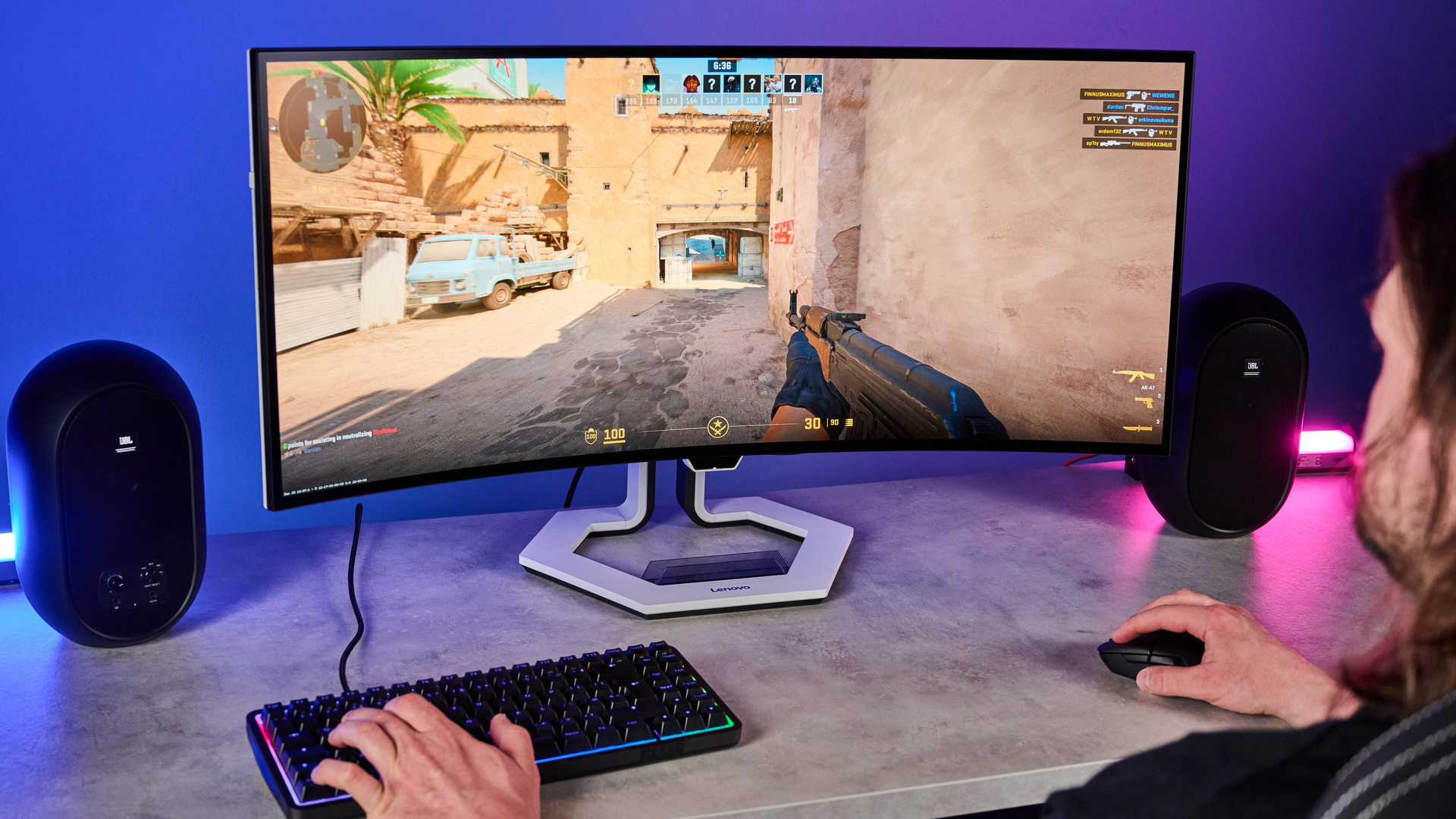
Specifications
Reasons to buy
Reasons to avoid
The Lenovo Legion Pro 34WD-10 is, quite simply, a beautiful display. You'll pay a premium for what you get, but its highly accurate colors, absorbing 800R curvature, fast 240Hz refresh rate and rapid 0.03ms response times to minimize ghosting and motion blur make it all the more worth it.
It's a beast for gaming, and its ultra-wide 21:9 aspect ratio on its sleek 34-inch (3440 x 1440) OLED display offers rich, detailed visuals no matter the title you play. But it's also amazing for work and productivity, as it arrives with a ton of ports. That includes two HDMI 2.1 ports, eARC for hooking up to sound systems, a USB-C power cable with 140W pass-through, Ethernet and even USB-A charging ports.
Throw all that into a premium-built monitor that doesn't hog all the space on your desk (even if it's heavy to move around, as expected), and the Lenovo Legion Pro 34WD-10 truly shines.
While it's a shame that its sRGB and DCI-P3 color volumes aren't as high as other monitors on this list, especially for its $1,199 price, and its brightness is a tad dim, that doesn't take away from the magnificent visuals this OLED curved monitor offers. If you've got pennies to spare, the Lenovo Legion Pro 34WD-10 will impress.
Read our full Lenovo Legion Pro 34WD-10 review.
The best dual display curved monitor
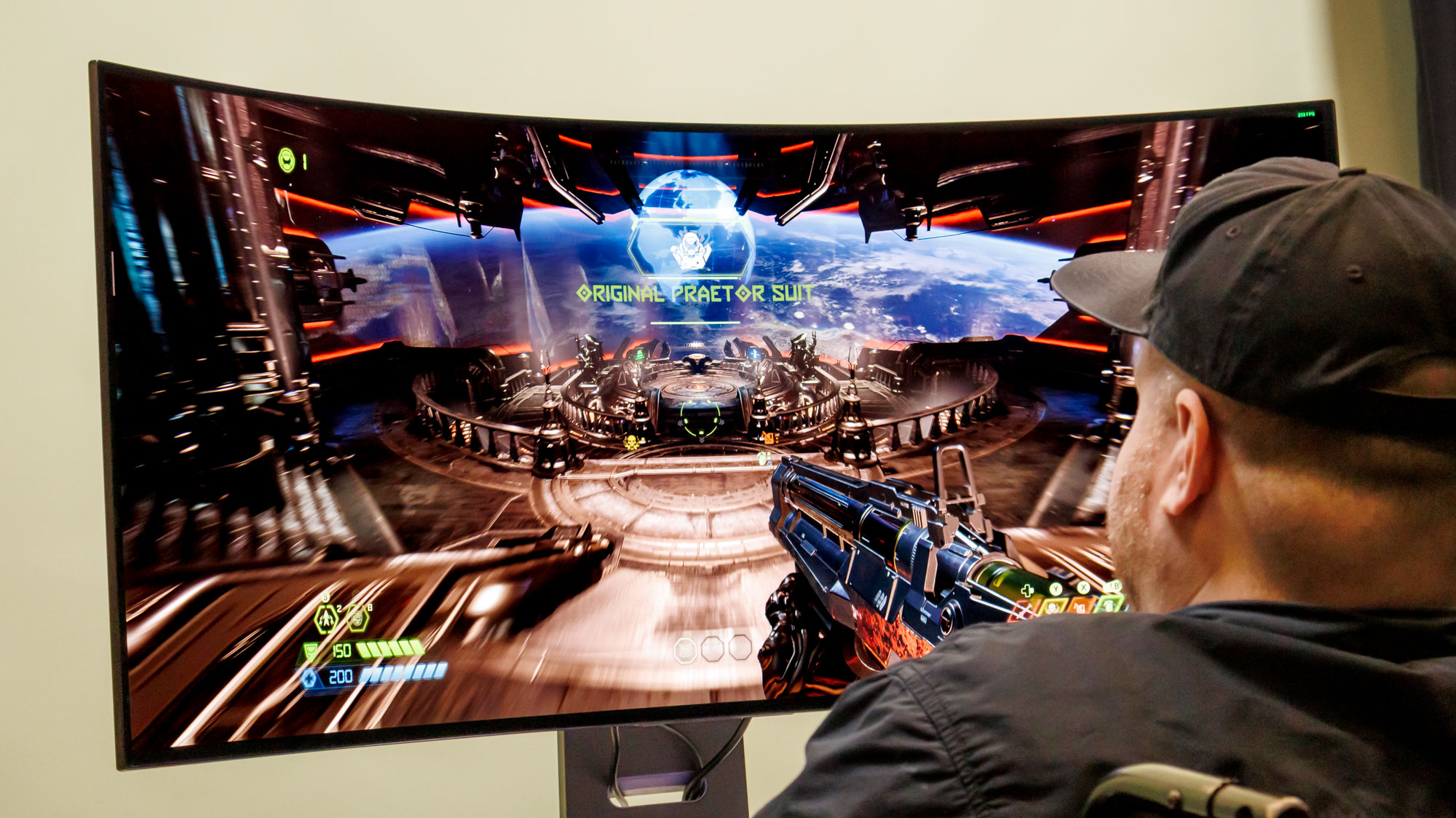
Specifications
Reasons to buy
Reasons to avoid
Why settle for just one display type when you can have two in one gorgeous curved monitor? That's the question the LG UltraGear 45GX950A-B poses, and to answer it, we say "exactly."
This 45-inch OLED curved monitor offers that immersive feel thanks to its ultrawide 21:9 aspect ratio, but also different resolutions and refresh rates, including one at 5K (5120 x 2160, 165Hz) and the other at 2K (2560 x 1080). That's great for both work and play, as you can easily switch between incredibly detailed, sharp visuals and fast and smooth performance.
Either way, you're getting an ultra-fast 0.03 response rate and those gorgeous, colorful OLED visuals. It isn't the brightest, as our tests showed that it offers relatively dim HDR, but that doesn't stop it from being a fantastic ultrawide curved monitor that many will enjoy. It's not cheap, as it will set you back around $1,999, but if you've saved up, it won't disappoint.
Read our full LG UltraGear 45GX950A-B review.
The best 57 inch curved monitor
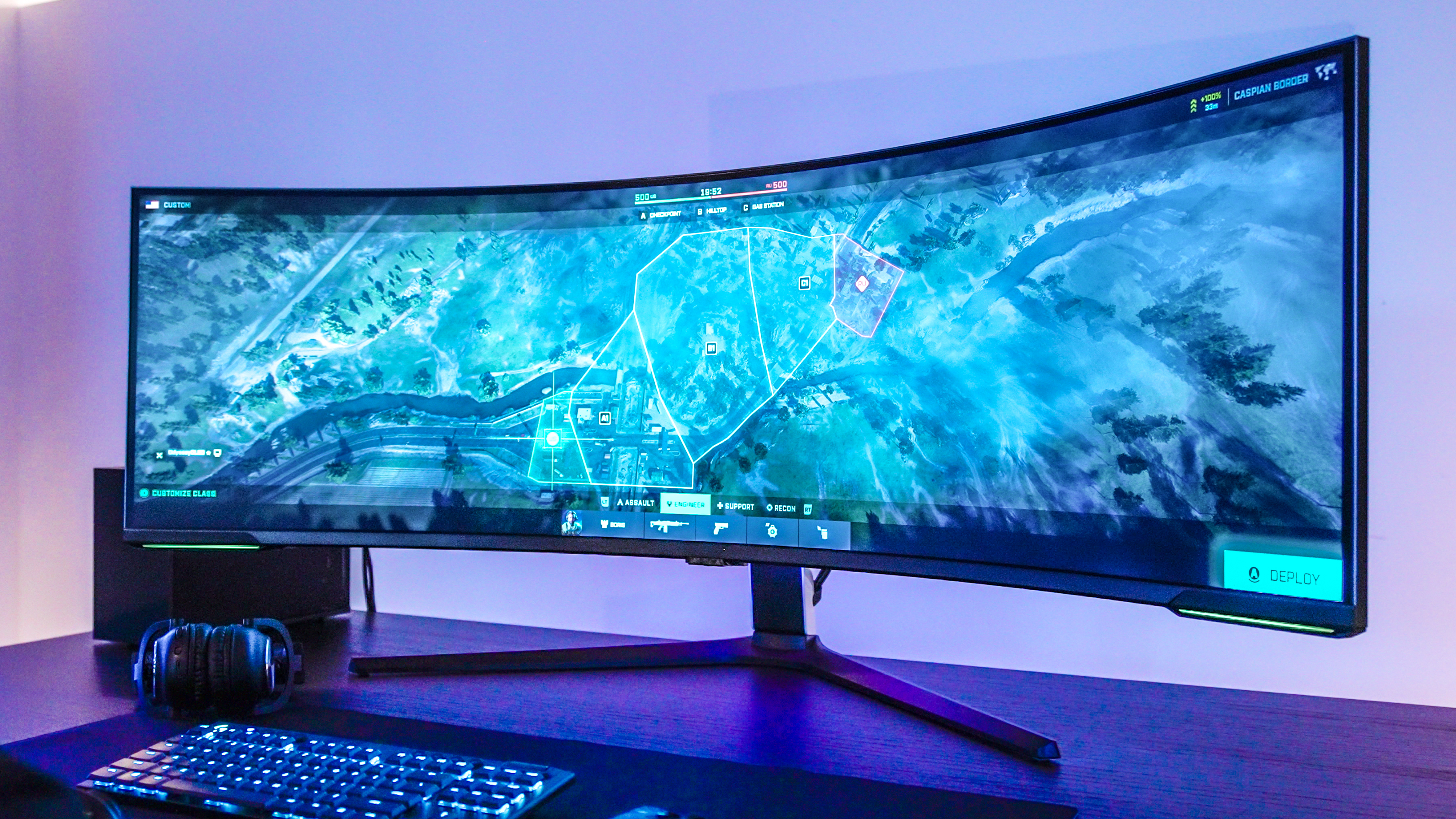
Specifications
Reasons to buy
Reasons to avoid
Make no mistake, the Samsung Odyssey Neo G9 is easily one of the largest monitors you'll ever see. At a monstrous 57 inches, Samsung's monitor makes all the other devices on this list look puny in comparison. Size is certainly its standout feature, but the Odyssey Neo G9 delivers the goods for a gaming monitor.
The immersive 1,000R curved display 7,680 x 2,160 resolution, buttery smooth 240Hz refresh rate and fast 1ms response time make for an awesome gaming experience no matter what you're playing. If you're a multitasker, all that extra screen real estate can also help you maximize productivity.
Though the Samsung Odyssey Neo G9 commands a hefty $2,499 asking price (at time of writing), it's still one of the finest curved monitors out there.
Read our full Samsung Odyssey Neo G9 review.
How to choose the best curved monitor for you
Finding the best curved monitor to suit your needs can be a little daunting if you don't know exactly the type of PC display you want... other than, y'know, it's curved. There are key details to look out for with any panel, regardless of its level of curvature.
We evaluate, score and rank every curved monitor on the same basic criteria, which starts out with size and resolution. In most cases, more is always better: the larger the display and the higher the resolution, the more you can see/the sharper the image will be.
Screen brightness is another important element to consider. In 2025, you definitely want a curved monitor that supports HDR (high dynamic range) content, and generally speaking, the more nits a panel produces, the brighter it will be in real-world usage.
How we tested these curved monitors
When we're on the hunt for the best curved monitors, we thoroughly put every panel through its paces during our reviews with our Klein K 10-A colorimeter, which we then pair with testing software. This high-quality scope allows us to measure a monitor's brightness levels, color accuracy and color gamut range.
Brightness is measured in nits, or candela per square metre (cd/m2). More nits equates to higher brightness levels, and in real-world viewing terms, this leads to more vivid colors and a clearer, more realistic overall image.
For more basic, budget-focused monitors, we still expect a display backlight to produce between 2-300 nits of brightness, though HDR (high dynamic range) screens often exceed that easily with a far higher maximum brightness. Not that brightness levels alone produce great curved monitors. After all, certain screens will wash out colors or offer inconsistent backlight levels that vary in some portions of the display panel (normally in the corners). "Backlight bleed" isn't something to need to worry about with OLED screens, though, as they can turn off every single one of their pixels to produce perfect black levels.
HDR presents its own testing challenges, as new standards allow curved monitors to offer higher peak luminance than our standard tests will register. If you're in any doubt, make sure you read an individual review for a fuller discussion of these issues, and how an individual curved monitor will handle HDR.
Color is the other big concern for displays, whether they’re curved or not. Monitors that produce a greater range of colors have a larger color gamut, as measured under the sRGB or P3 color standards. This is presented as a percentage, with higher percentages indicating more colors.
Color accuracy is the other main aspect when it comes to color reproduction, which lets us measure how closely a monitor can reproduce certain shades. This is presented as a Delta-E rating, which indicates the level of deviation from perfect. Zero is a perfect score, while higher numbers indicate lower accuracy.
We also test a display's response time using a Leo Bodnar input lag tester. This advanced gadget measures how long it takes a signal to travel from a source device to the monitor and show up on the screen. Measured in milliseconds, this number is most useful for gamers or for those users who need immediate onscreen feedback from any input.
Lastly, every monitor we test is also used for web browsing, streaming videos and gaming, as well as the writing of the review itself. Our anecdotal testing often allows us to note the specific quirks of a display that lab testing might sometimes miss, whether it's challenges in scaling content, backlight issues or color reproduction.
Get instant access to breaking news, the hottest reviews, great deals and helpful tips.

Darragh is Tom’s Guide’s Computing Editor and is fascinated by all things bizarre in tech. His work can be seen in Laptop Mag, Mashable, Android Police, Shortlist Dubai, Proton, theBit.nz, ReviewsFire and more. When he's not checking out the latest devices and all things computing, he can be found going for dreaded long runs, watching terrible shark movies and trying to find time to game
